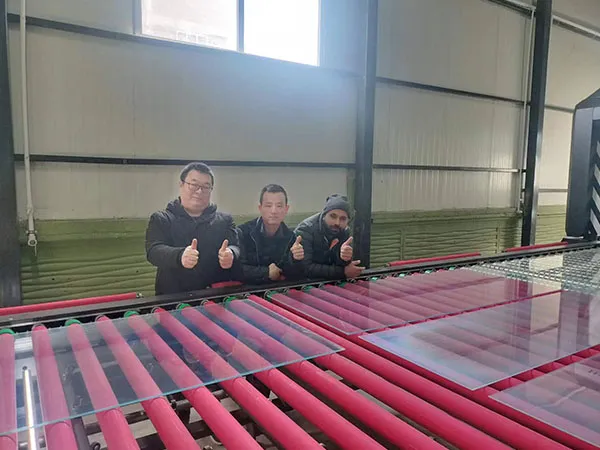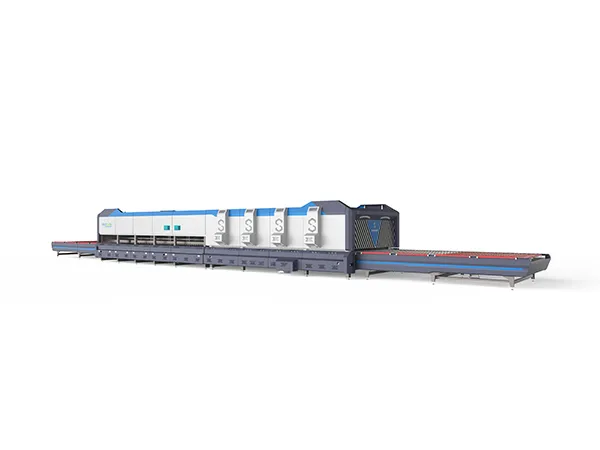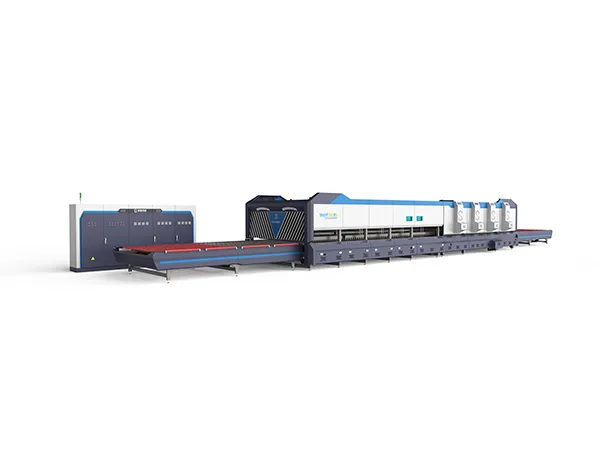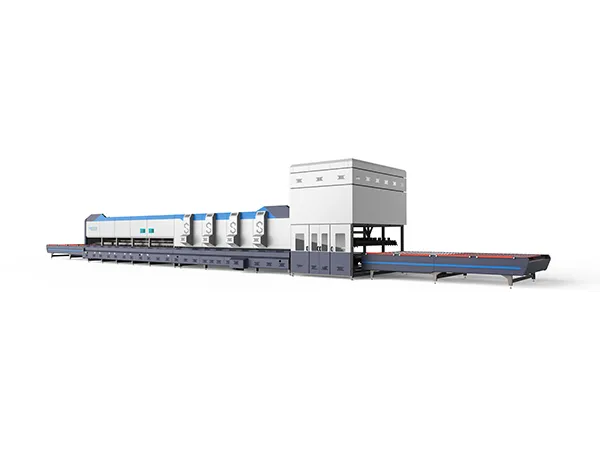Heating up a tempering furnace properly is crucial for achieving the desired mechanical properties in materials like metals and glass. Here are general guidelines for heating up a tempering furnace:
Tempering furnace heating method

1. Preparation and Safety Checks:
Inspection: Before starting, inspect the furnace for any signs of damage or wear. Check the integrity of heating elements, thermocouples, insulation, and other components.
Safety Equipment: Ensure that all safety equipment, such as fire extinguishers and protective gear, is readily available and in good condition.
Ventilation: Verify that the furnace area is well-ventilated to handle fumes and gases that may be released during heating.
2. Preheating Procedures:
Initial Warm-Up: Start the furnace at a low temperature to gently warm up the internal components. This helps to prevent thermal shock to the materials and the furnace lining.
Incremental Heating: Gradually increase the temperature in small increments. The specific rate of increase will depend on the material being tempered and the furnace design. For example, a common practice is to increase the temperature by 50°C to 100°C (122°F to 212°F) per hour.
3. Reaching Target Temperature:
Uniform Heating: Ensure that the heating process is uniform throughout the furnace chamber. This may involve adjusting the position of items inside the furnace or using fans to circulate the heat.
Soaking Period: Once the desired tempering temperature is reached, maintain the temperature for a specified period (known as the soaking period) to ensure uniform heat treatment. The duration of this period depends on the material's thickness and properties.

4. Monitoring and Control:
Thermocouples and Sensors: Use accurate thermocouples or temperature sensors to monitor the furnace temperature continuously. Ensure they are calibrated and positioned correctly.
Control System: Utilize the furnace's control system to manage temperature settings, ramp rates, and soak times. Modern furnaces often have programmable controls for precise adjustments.
5. Cooling Down:
Controlled Cooling: After the soaking period, the furnace should cool down at a controlled rate. Rapid cooling can cause thermal stress and damage to the materials or the furnace.
Ventilation During Cooling: Open the furnace door or use a cooling system if necessary, while ensuring that the cooling process is gradual and controlled.
6. Post-Process Inspection:
Material Check: After cooling, inspect the tempered materials for any signs of deformation, cracks, or other issues.
Furnace Maintenance: Conduct regular maintenance checks to ensure the furnace remains in good working condition for future use.

Special Considerations:
Material-Specific Requirements: Different materials may have specific heating and cooling requirements. Always refer to material data sheets and technical guidelines for precise instructions.
Safety Protocols: Follow all safety protocols, including wearing appropriate personal protective equipment (PPE) and ensuring that the furnace is operated by trained personnel.
In summary, the correct heating process of the tempering furnace requires comprehensive consideration of multiple factors, including preheating, temperature control, uniform heating, insulation and cooling. Through delicate operation and strict management, it can ensure that the tempering furnace maintains an efficient, stable and safe operating state during the processing.










